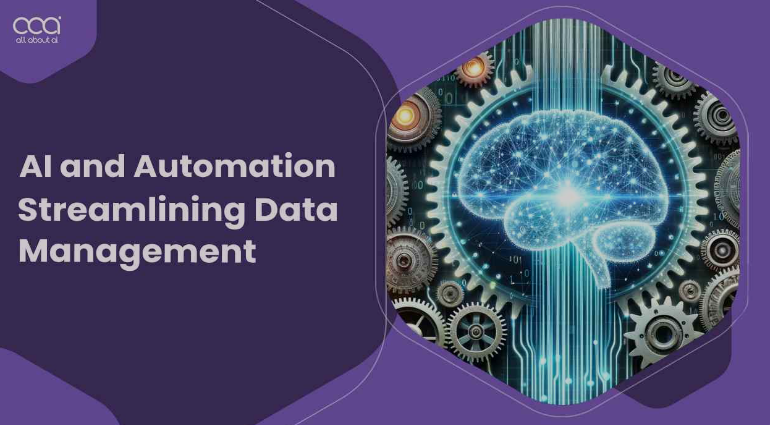AI and Automation Streamline Data Management:
Rapidly evolving digital landscape, financial operations (FinOps) have become a critical component of any enterprise’s success. With the increasing complexity of managing cloud infrastructure, an executive architect’s approach to FinOps must leverage cutting-edge technologies like artificial intelligence (AI) and automation to streamline data management, ensuring both cost efficiency and operational effectiveness.
Understanding FinOps: The Intersection of Finance and Operations
AI and Automation Streamline Data Management: FinOps, or Financial Operations, represents the convergence of finance, technology, and operations. It’s a cultural and operational practice designed to help organizations manage cloud costs, optimize usage, and drive financial accountability across teams. As cloud usage grows exponentially, so does the complexity of managing costs, usage patterns, and resource allocation. An executive architect in this domain plays a pivotal role in ensuring that FinOps strategies align with broader business goals, focusing on maximizing ROI while minimizing financial risks.
The Role of AI in Enhancing FinOps

Artificial Intelligence (AI) has revolutionized many aspects of enterprise operations, and FinOps is no exception. AI’s ability to process vast amounts of data in real-time and identify patterns offers unparalleled advantages in managing cloud finances. Here’s how AI contributes to streamlining FinOps:
Predictive Analytics for Cost Management: AI-powered predictive analytics can forecast future cloud expenses based on historical data, usage patterns, and market trends. This allows organizations to budget more accurately, avoiding unexpected costs and ensuring that resources are allocated efficiently.
Automated Resource Optimization: AI can automatically analyze cloud usage and identify underutilized resources. By recommending or even initiating the resizing or termination of idle resources, AI helps reduce waste and optimize cloud spending.
Anomaly Detection in Real-Time: AI systems can monitor cloud usage in real-time, detecting anomalies such as unexpected spikes in costs or unusual usage patterns. This enables immediate corrective actions, preventing financial leaks and ensuring continuous alignment with budgetary constraints.
Automation: The Key to Streamlined Data Management
Automation complements AI by executing repetitive and time-consuming tasks with precision and speed. In the context of FinOps, automation enhances data management processes, ensuring accuracy and freeing up valuable time for strategic decision-making.
Automated Billing and Invoicing: Automation can streamline the billing process by automatically generating invoices based on usage data, applying discounts, and ensuring compliance with financial regulations. This reduces the chances of human error and accelerates the revenue recognition process.
Automated Reporting and Dashboards: Executive architects often need to provide stakeholders with up-to-date financial reports. Automation can generate these reports, pulling data from various sources and presenting it in a digestible format through dashboards. This ensures transparency and aids in informed decision-making.
Cost Allocation and Tagging Automation: Properly tagging and allocating costs to different departments or projects is crucial for financial accountability. Automation can enforce tagging policies, ensuring that all resources are correctly attributed, which simplifies the tracking of expenses and budgeting.
The Executive Architect’s Strategic Vision:AI and Automation Streamline Data Management
For an executive architect, implementing AI and automation in FinOps isn’t just about adopting new technologies; it’s about transforming the organization’s approach to financial management. This requires a strategic vision that aligns technological capabilities with business objectives.
Establishing a FinOps Culture: The executive architect must foster a culture where financial responsibility is shared across the organization. This involves training teams to understand the financial implications of their cloud usage and empowering them to make cost-effective decisions.
Continuous Improvement and Adaptation: AI and Automation Streamline Data Management and automation tools must be continuously monitored and refined. An executive architect must ensure that these technologies evolve alongside the organization’s needs, adapting to new cloud services, pricing models, and usage patterns.
Collaboration Across Teams: Successful FinOps implementation requires collaboration between finance, operations, and technology teams. The executive architect must facilitate this collaboration, ensuring that all stakeholders have a shared understanding of goals and responsibilities.
Conclusion of AI and Automation Streamline Data Management
AI and Automation Streamline Data Management AI and Automation Streamline Data Management :An executive architect’s approach to FinOps, powered by AI and automation, is pivotal in navigating the complexities of cloud cost management. By leveraging these technologies, organizations can achieve greater financial transparency, optimize resource usage, and ultimately drive business success. In this era of digital transformation, the integration of AI and automation into FinOps is not just an option; it’s a necessity for staying competitive in the marketplace of AI and Automation Streamline Data Management.

